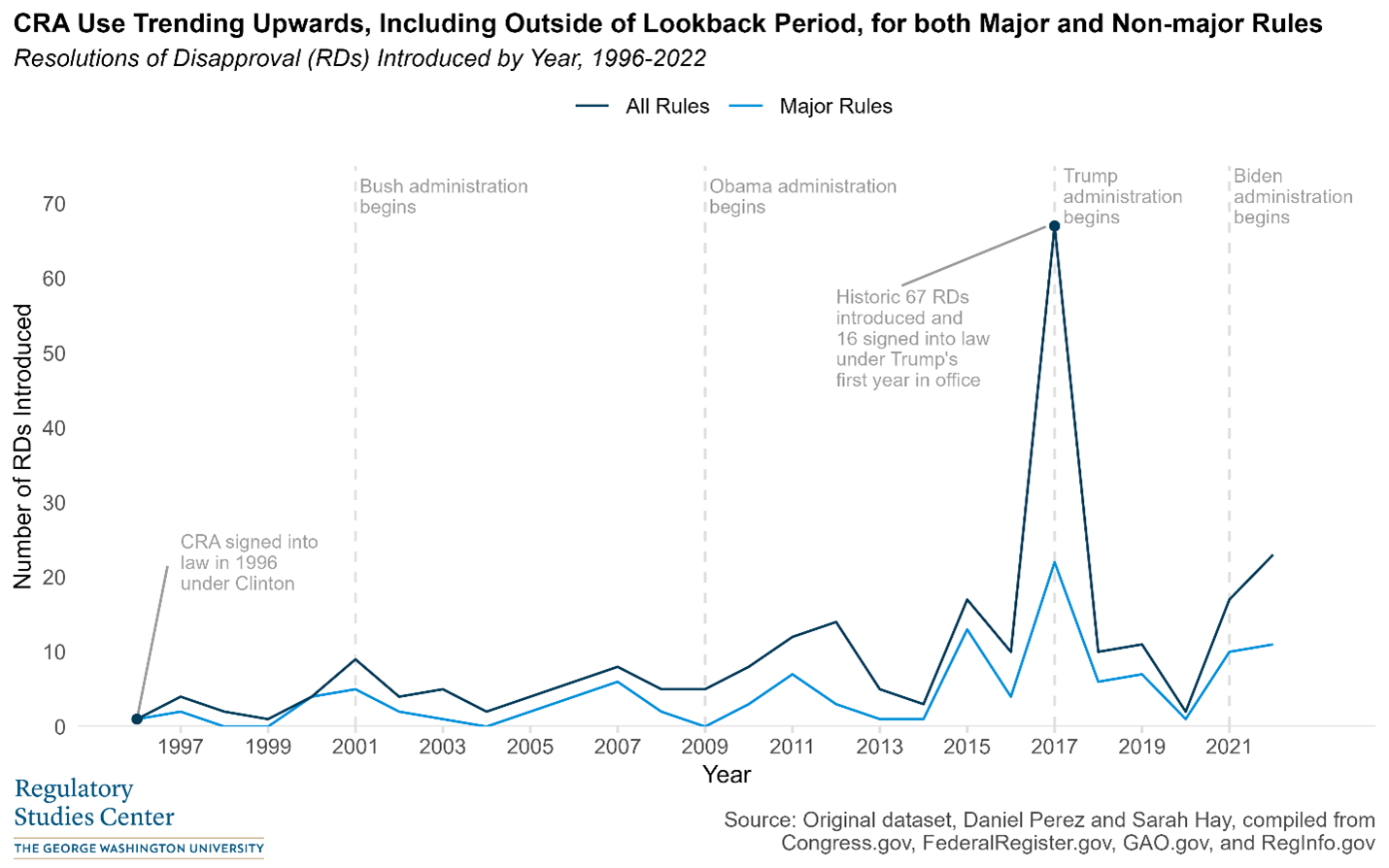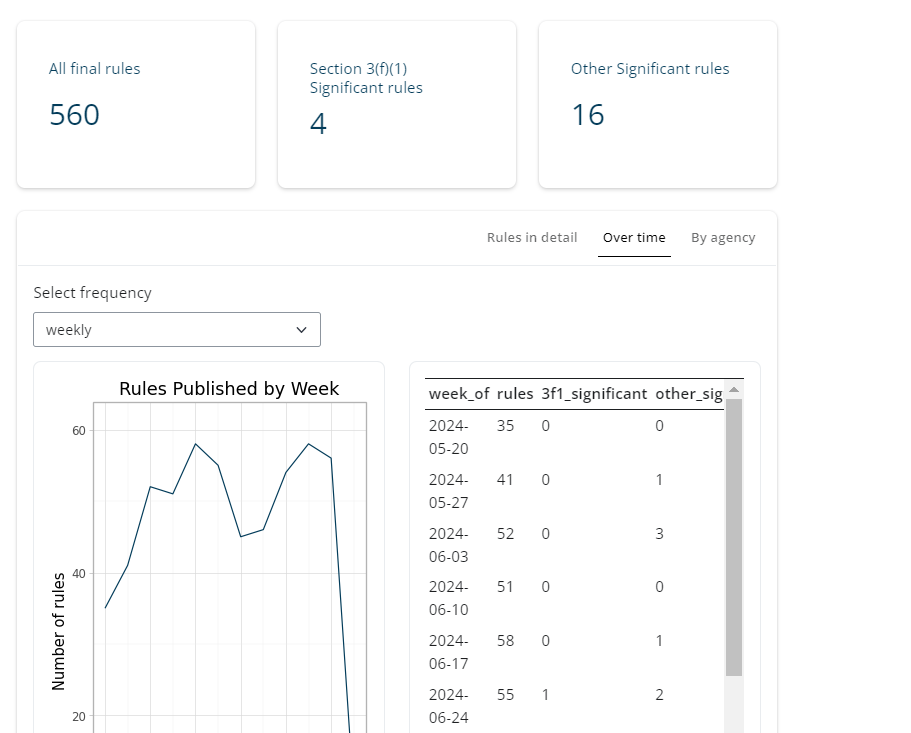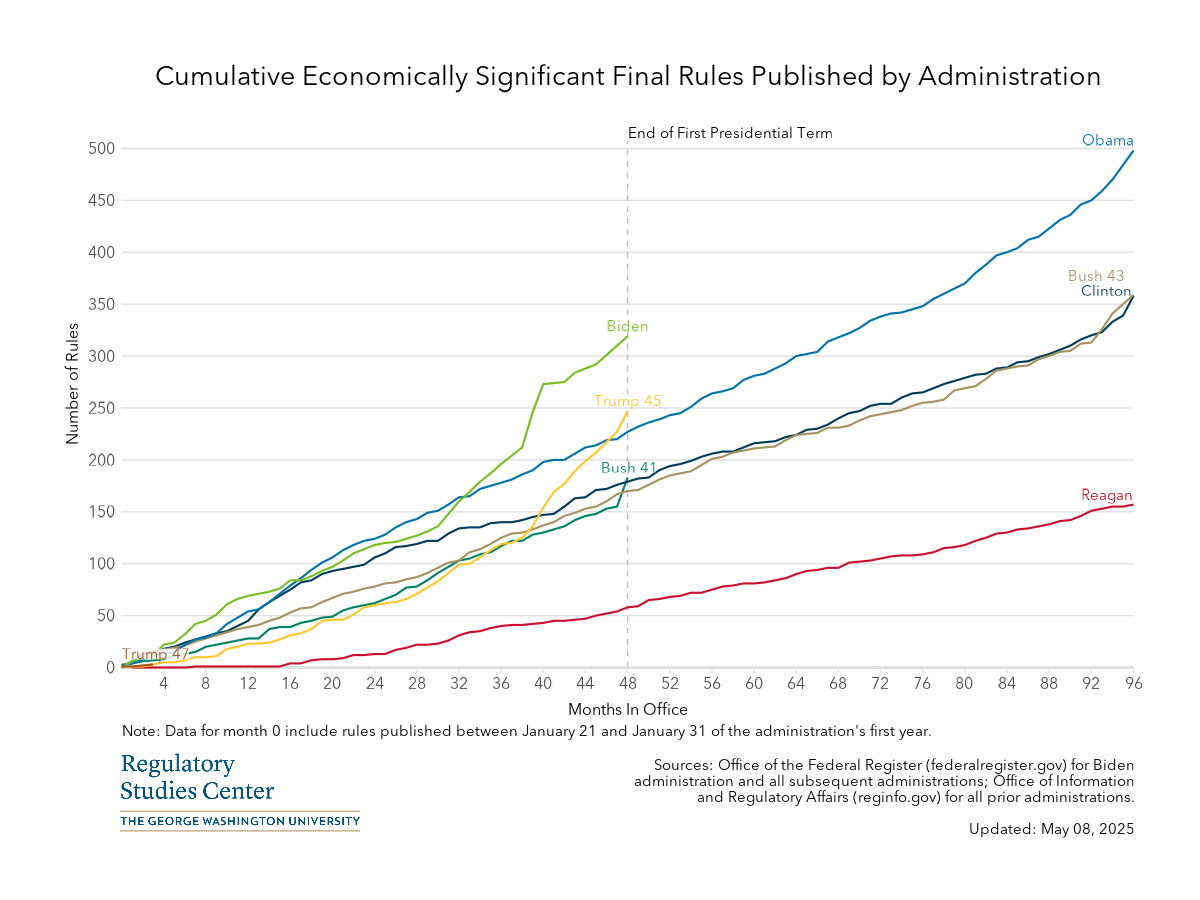Public Interest Comment on Laws and Regulations That Raise Barriers to Competition
Public comment in response to the DOJ Anticompetitive Regulations Task Force on laws and regulations that raise barriers to competition


Improving regulatory policy
through research, education, and outreach.

Promotes best practices for regulatory analysis

Improves regulatory processes and institutions

Serves as a source for objective information
"The GW Regulatory Studies Center has done phenomenal work in cataloguing and analyzing reforms in regulatory policy...[it is] a national treasure."
Cass R. Sunstein
Robert Walmsley University Professor, Harvard
OIRA Administrator Under President Obama
The Congressional Review Act (CRA) establishes procedures for Congress to overturn final rules issued by federal agencies. After an agency's rule is reported to Congress, members of Congress have 60 days to introduce a joint resolution disapproving of the rule. When signed into law, these resolutions of disapproval (RDs) overturn the rule in question and bar agencies from issuing a "substantially similar" rule. The CRA offers two unique mechanisms: the Senate "fast-track" procedures and the "lookback" period. For an in-depth discussion of these mechanics and more, see our Regulatory Insight A Lookback at the Law: How Congress Uses the CRA.


This dashboard allows users to explore the set of final rules published in the Federal Register in 2024, and how various lookback dates could affect the set of rules available for congressional review at the beginning of the next session of Congress. View Dashboard.
Commentary:
Will History Repeat Itself? Forecasting CRA Use in a Second Trump Administration. Steve Balla and Sarah Hay, May 3, 2024. What policy areas are most likely to be challenged if Trump wins a second term in the 2024 presidential election?

Public Interest Comment on Laws and Regulations That Raise Barriers to Competition
Public comment in response to the DOJ Anticompetitive Regulations Task Force on laws and regulations that raise barriers to competition
Issues in Fairness and Transparency in Regulation by Adjudication
A review of the process and fairness considerations that arise when agencies make policy through precedential adjudications
The Economic Impact of Uncertainty About US Regulations of the Energy Sector
Article for the journal Economic Inquiry creates a monthly-frequency measure of regulatory uncertainty related to oil and gas production
"Your input and expertise during the drafting of the Early Participation in Regulations Act of 2019 and SMART Act of 2019 was invaluable."
Joint Statement (PDF)
Senator Kyrsten Sinema (D-AZ)
Senator James Lankford (R-OK)
"The GW Regulatory Studies Center provided me with the analytical skills I needed, and gave me a sense of community as an international student."
— Ana Maria Zárate Moreno
"It is rare to find a situation where you have a community of scholars who are so accomplished all studying regulation in one place."
— Christopher Carrigan
"To make my stories authoritative I like to talk to analysts who have practical knowledge of regulatory policy, and that's why I keep returning to the GW Regulatory Studies Center."
— Cheryl Bolen
